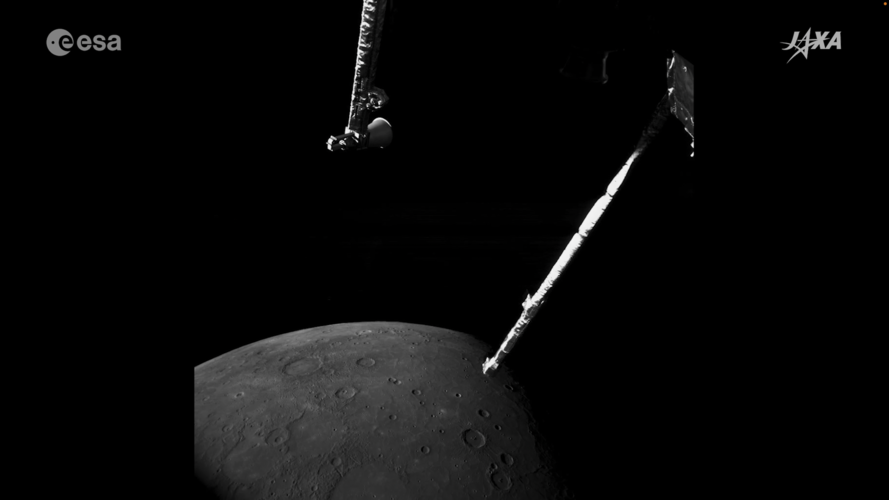Loft Orbital raises $170 million to accelerate condosat business
Tuesday, 14 January 2025 20:45
Loft Orbital raises $170 million to expand space infrastructure service
Tuesday, 14 January 2025 20:45
Loft Orbital has raised $170 million to expand manufacturing facilities and streamline operations with more artificial intelligence.
Varda’s second mission launches with U.S. Air Force payload
Tuesday, 14 January 2025 20:43
The company’s W-2 capsule launched aboard SpaceX's Transporter-12 rideshare mission
US, Japanese lunar landers set to launch on single rocket
Tuesday, 14 January 2025 20:11This request seems a bit unusual, so we need to confirm that you're human. Please press and hold the button until it turns completely green. Thank you for your cooperation!
Press and hold the button
If you believe this is an error, please contact our support team.
185.132.36.159 : b46f63a6-17a3-4df6-9edd-a72ccaad
A Swedish artist's model house could soon find a permanent home on the moon
Tuesday, 14 January 2025 18:21This request seems a bit unusual, so we need to confirm that you're human. Please press and hold the button until it turns completely green. Thank you for your cooperation!
Press and hold the button
If you believe this is an error, please contact our support team.
185.132.36.159 : 6720b2fb-3c45-4a62-958b-bc36949d
Mission to moon carries tiny red Swedish home to space
Tuesday, 14 January 2025 18:21This request seems a bit unusual, so we need to confirm that you're human. Please press and hold the button until it turns completely green. Thank you for your cooperation!
Press and hold the button
If you believe this is an error, please contact our support team.
185.132.36.159 : 6720b2fb-3c45-4a62-958b-bc36949d
Tomorrow.io NextGen offers high-resolution rain forecasts
Tuesday, 14 January 2025 16:52
Tomorrow.io satellites feed NextGen, a tool that offers global precipitation forecasts with a resolution of 2.5 kilometers.
Rosotics pivots to focus on orbital transport vehicles
Tuesday, 14 January 2025 16:00
Rosotics seeks to build a propellant depot at Earth-moon Lagrange Point 5.
The post Rosotics pivots to focus on orbital transport vehicles appeared first on SpaceNews.
Defense Department’s new tool to investigate on-orbit anomalies
Tuesday, 14 January 2025 15:36
Cloud-based tool to help military satellite operators determine the cause of on-orbit anomalies.
The post Defense Department’s new tool to investigate on-orbit anomalies appeared first on SpaceNews.
Yutu-2 rover likely immobile on the moon after historic lunar far side mission
Tuesday, 14 January 2025 14:41
BepiColombo's sixth Mercury flyby: the movie
Tuesday, 14 January 2025 14:00 Video:
00:01:36
Video:
00:01:36
Fly over Mercury with BepiColombo for the final time during the mission’s epic expedition around the Sun. The ESA/JAXA spacecraft captured these images of the Solar System's smallest planet on 7 and 8 January 2025, before and during its sixth encounter with Mercury. This was its final planetary flyby until it enters orbit around the planet in late 2026.
The video begins with BepiColombo's approach to Mercury, showing images taken by onboard monitoring cameras 1 and 2 (M-CAM 1 and M-CAM 2) between 16:59 CET on 7 January and 01:45 CET on 8 January. During this time, the
SpaceX sends up 5th Space Coast launch of the year
Tuesday, 14 January 2025 11:47This request seems a bit unusual, so we need to confirm that you're human. Please press and hold the button until it turns completely green. Thank you for your cooperation!
Press and hold the button
If you believe this is an error, please contact our support team.
185.132.36.159 : 1f498798-3d6f-430f-bbd9-ad89d602
Congressman watches for potential changes at NASA under Trump administration
Tuesday, 14 January 2025 11:45
The congressman whose district includes NASA’s Goddard Space Flight Center says he is taking a wait-and-see approach to potential changes to the center.
Martijn Blanken, Neo Space Group – Commercial Space Transformers
Tuesday, 14 January 2025 11:35
In this episode of Commercial Space Transformers SpaceNews Senior Staff Writer Jason Rainbow speaks with Martijn Blanken, CEO, Neo Space Group (NSG).
SpaceX aims for Wednesday afternoon to launch Starship's 7th test mission
Tuesday, 14 January 2025 11:08 The seventh flight test of SpaceX's Starship is scheduled to launch on Wednesday, January 15. This flight test will showcase a new iteration of Starship with substantial upgrades, marking its first payload deployment test, multiple reentry experiments, and both the launch and return of the Super Heavy booster.
Among the upgrades to Starship's upper stage are redesigned forward flaps reloca
The seventh flight test of SpaceX's Starship is scheduled to launch on Wednesday, January 15. This flight test will showcase a new iteration of Starship with substantial upgrades, marking its first payload deployment test, multiple reentry experiments, and both the launch and return of the Super Heavy booster.
Among the upgrades to Starship's upper stage are redesigned forward flaps reloca 
